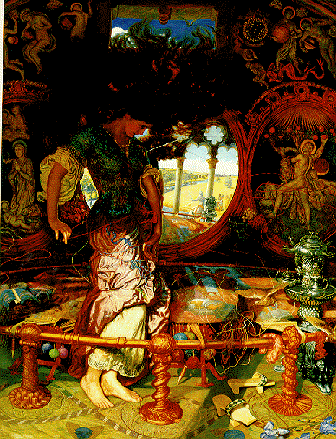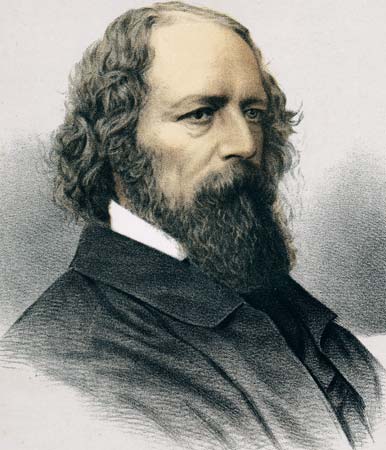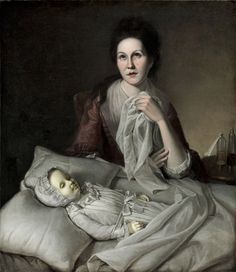About Alfred Lord Tennyson
Born on August 6, 1809 in Lincolnshire, England, Alfred Lord Tennyson is one of the most well-known English poets. He was an official poetic spokesman for the reign of Queen Victoria. He used writing as a medium to escape from the troubles in his life. His first collection of poetry, “Poems by Two Brothers” was published in 1827. In the same year, he joined Trinity College in Cambridge. In 1842, two volumes of Poems, were published and they were an immediate success. He married Emily Sellwood in 1950. Queen Victoria was an ardent admirer of Tennyson’s works. He was Poet Laureate of Great Britain and Ireland from 1850 to 1892. From his work, he appears to be heavily influenced by Romantic poets, such as Keats. Tennyson drew themes for his work from various sources including classical myths and everyday situations. He died on October 6, 1892 at the age of eighty-three.
About Lullaby:
“Lullaby” is an excerpt from “The Princess”, one of Tennyson’s poems, published in 1847. “The Princess”, a blank verse poem, narrates the story of a beautiful and heroic princess called Ida. “Lullaby”, however, doesn’t appear to have any relevance to the plot of “The Princess”. It is a kind of children’s song, sung by a mother to a baby during his sleep to calm him down.
Setting of Lullaby:
From the poem, one can imagine a perplexed and frustrated mother holding her young baby in her arms, trying to lull him to sleep.
Style of Lullaby:
The rhyme scheme of the poem is aBaBaabX cDcDccdX
The closest metre is iambic trimeter.
The closest stanza type is tercet.
Poetic Devices in Lullaby:
Alliteration
Stanza 1:
Wind of the western sea (line 2)
Low, low, breathe and blow (line 3)
Stanza 2:
Silver sails all out of the west (line 6)
Repetition
Stanza 1- Sweet and low, sweet and low (line 1)
Stanza 2- Sleep and rest, sleep and rest (line 2)
Metaphor
Tennyson makes use of ‘the dying moon’ as a metaphor for the death of the father of the child.
In line 7, stanza 2, ‘silver’ is a metaphor for a coffin made of silver. The phrase ‘silver moon’ has been used to represent the coffin in which the father lies.
Symbolism
The word ‘west’ is used in the poem multiple times. It is a symbol for the death of the father of the child, as the west is where the sun sets.
Imagery
Tennyson uses imagery in this poem to create a sense of despair in the entire poem. Words that appeal to the senses, such as “sea”, “rolling waters”, “moon”, and “silver” have been thoroughly used.
The words “breathe” and “blow” appeal to the sense of touch. They reflect the mother’s longing for her husband.
Summary of Lullaby:
“Lullaby” is a part of “The Princess”, a blank-verse narrative poem by Alfred Lord Tennyson. The poem begins abruptly, with winds blowing sweet and low over the western sea. A mother requests the winds to blow her beloved back to her, while she holds their child to her breast. In the second stanza, the woman tries to console her child. She coos to the child that his father will return soon. She tries to comfort the baby by telling him that his father will come back ‘under the silver moon’, and that he must sleep.
Critical Analysis of Lullaby:
This 16-line poem aims to portray the longing of a mother for her husband, while she tries to convince her young child that his father will return soon. The father of the child, however, is dead. Tennyson utilises natural elements such as the “dying moon” and the western direction to symbolise the father’s death. The narrator of the poem is the mother, who holds her child to her breast. Throughout the poem, she attempts to calm the child down so that he can sleep.
The vocabulary Tennyson employs in this poem is extremely simple. That gives it a realistic edge, since the poem is meant to be a child’s lullaby and simplistic language can be understood easily by children. A notable characteristic of the poem is that the rhyming words are short and monosyllabic. This reflects the mother’s anxiety and frustration. She awaits for her husband’s return; she longs for him. From the phrase ‘silver sails’, we can infer that the father has gone to war.
She is aware of his death. She wistfully tells her child that his father will return from moonlit oceans. However, ‘silver moon’ is a metaphor for a silver coffin. She does not wish to make her young, innocent child upset by informing him of his father’s death, and hence speaks in metaphors.
In “Lullaby”, the poet has made use of simple and careful rhythms and repetition of phrases that contain no spirit but maintain the structure of the piece. Tennyson uses blank verse in this poem to depict spontaneity. The mother doesn’t put much thought into the lullaby, as her mind is occupied with the thoughts of the father and his death. This confusion can also be noticed in the last lines of each stanza, where the rhyme is broken.
While attempting to comfort the baby, the mother appears to be trying to comfort herself too. She constantly urges her baby to sleep. She wants to comfort him, but she also wants to soothe her own thoughts. The best way for her to believe that the child is comforted is for him to fall asleep.
The repetition of the line “father will come to thee soon” may reflect a shred of hope and optimism in the mother’s heart. She is sorrowful, but perhaps not utterly hopeless. Perhaps, she holds the belief that her husband will really return.
Throughout the poem, the reader can find a repetition of ‘s’ sounds (sweet, sea, sail). The ‘s’ sound is a delicate, soft sound that reflects monotony associated with death.
Central Idea of Lullaby:
This poem is fundamentally, a lullaby composed to soothe and comfort the reader. The subject of this poem, a woman, longs for her husband. She pleads to the winds to return her husband to him. It is obvious that she is in agony. However, she is also tending to an innocent child, and thus must retain her calm.
Tone of Lullaby:
The tone of the poem is sweet and sad, and so insistent on being reassuring that one feels something must be wrong. In “Lullaby”, Tennyson maintains a tone that depicts a sense of melancholy and regret of the mother for the loss of the father. However, with the help of pleasant imagery, the poem appears to be very soothing. Moreover, it appears to have a sense of hope that the father may be back one day. There is, hence, a very small hint of optimism.
Conclusion
“Lullaby” by Alfred Lord Tennyson is a marvelous poem as it conveys its message in just a few words. Tennyson employs evocative language to express the feelings of the mother, and makes heavy use of visual imagery. “Lullaby” stands as a successful proof of how even the simplest language can convey the most complicated emotions.
Contrubutor: Palak Gupta
Some online learning platforms provide certifications, while others are designed to simply grow your skills in your personal and professional life. Including Masterclass and Coursera, here are our recommendations for the best online learning platforms you can sign up for today.
The 7 Best Online Learning Platforms of 2022
- Best Overall: Coursera
- Best for Niche Topics: Udemy
- Best for Creative Fields: Skillshare
- Best for Celebrity Lessons: MasterClass
- Best for STEM: EdX
- Best for Career Building: Udacity
- Best for Data Learning: Pluralsight














